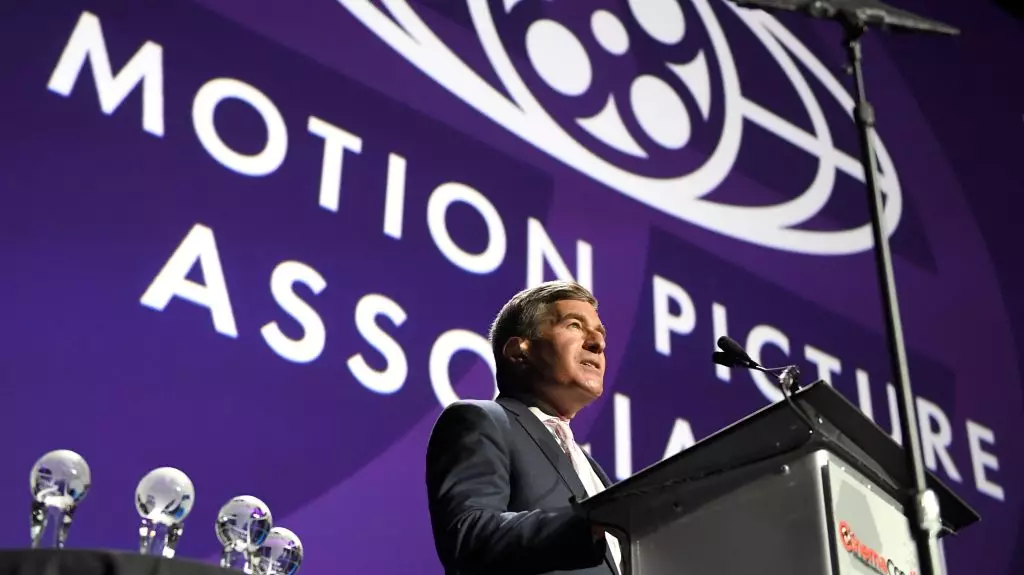In a recent address that resonated with optimism yet acknowledged the tough terrain ahead, Charlie Rivkin, President and CEO of the Motion Picture Association (MPA), stood before theater owners at CinemaCon to reaffirm the MPA’s commitment to revitalizing cinema culture. He articulated a shared desire for “great movies that draw big audiences,” a sentiment that encapsulates the struggles and aspirations of an industry grappling with the aftermath of unprecedented changes. As the global film landscape adapts to new norms post-pandemic, Rivkin’s remarks serve both as a salve and a rallying cry that signals the importance of unity between studios and theaters.
Rivkin’s acknowledgment of uncertainty is particularly salient. The first quarter of the year revealed volatility in ticket sales and audience engagement, leading many in the exhibition sector to voice concerns over production practices initiated during the pandemic. The optimistically named “New Normal” has at times felt anything but, given the ongoing adjustments many studios must make to attract audiences back to theaters. Rivkin’s leadership emerges as crucial here; he recognizes the need for a proactive approach, highlighting Amazon MGM Studios’ commitment to releasing 12-14 films in cinemas next year as a beacon of hope.
Building Competitive Advantages for Film Production
Moreover, Rivkin delineates the MPA’s role as the chief advocate for the motion picture industry on a global scale, emphasizing the need for competitive incentives that draw filmmakers back to local communities. This earnest pursuit of production opportunities reflects a broader strategy aimed at reinforcing America’s position in the film production landscape. Rivkin’s assertion that successful film production translates into significant local economic impact—averaging $1.3 million pumped into daily economies—articulates the immense value the industry brings to towns and cities, thus framing cinema as not just an entertainment sector but as an economic powerhouse.
The notion that production should be prioritized in legislative discussions is crucial. Rivkin’s push for policymakers to recognize film production as a catalyst for economic growth reflects a clear understanding of the interconnectedness of budget proposals, job creation, and local business prosperity. By shedding light on various legislative efforts across states like California and New York, which are stepping up their incentive programs to lure filmmakers, Rivkin positions the MPA as a pivotal player advocating for sustained growth and viability in cinema.
The Role of Incentives in Revitalizing Local Economies
Highlighting the recently announced tax credits in California, which have reached significant milestones with a record number of films poised for subsidies, Rivkin presents a cogent argument that dovetails fiscal benefits with cultural richness. He asserts that “when done right, incentives bring production,” a sentiment steeped in both economic pragmatism and a recognition of the realm’s artistic potential. The film industry is not merely a series of individual projects; it is an intricate ecosystem where jobs beget economic stability and artistic endeavors flourish in multiple communities.
Rivkin’s vision, shared alongside union and guild partners, points to a collective ambition that could reinvigorate American leadership in production. However, the challenge remains: sustaining momentum in the face of evolving industry dynamics. As output and exhibition capabilities continue to shift, Rivkin emphasizes that the MPA will not shy away from pursuing federal tax measures necessary for ensuring long-term investments by studios.
A Call to Action for the Future of Cinema
The confluence of Rivkin’s remarks at CinemaCon and the pressing realities faced by the exhibition industry underscores an urgent need for collaboration. The cinema landscape, once seemingly straightforward, has become layered with complexities that necessitate a united front. As audience preferences evolve in an age dominated by streaming services and digital consumption, the call for theaters to adapt, innovate, and engage with their communities becomes paramount.
With a clear understanding of the stakes involved, Rivkin’s address reminds us of the unyielding spirit of the film industry and its enduring power to bring people together. As theater owners, studios, and the broader community navigate this new landscape, the values of partnership, commitment, and shared vision will be the cornerstone of a revitalized cinematic experience that not only entertains but also nurtures local economies and cultural narratives.

